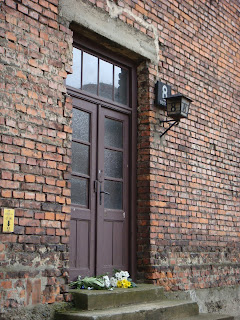I guess it is really true what they say, time flies when you are having fun, and fun…well that doesn’t even begin to describe the past year. Since Krakow, I’ve been on many, many adventures. I fell in love - with a country - sailed the Mediterranean on a wooden ship, danced at a beach wedding and pirate disco, cliff jumped into the blue waters of Oludeniz and paraglided down to it’s beaches, watched the Dervishes whirl, been scrubbed and kneaded in a hammam, crossed a busy city intersection with a sheep, played backgammon in the lazy heat of the Taksim backstreets, celebrated Ramadan under the minarets of the Blue Mosque, been welcomed into the home of some of the warmest people I’ve ever met on my travels, slept in a cave (hotel), and floated over fairy chimneys watching the sun awake – all of this just in Turkey! I’ve witnessed a traditional cheese auction, spent some much needed time with friends & family in the fresh Pennsylvania country air, enjoyed the quintessential New York day complete with lunch at Tavern on the Green & carriage ride through Central Park, and laughed at the unusual attractions of the infamous Brooklyn institution, Coney Island. I’ve ran 10 miles 'dam to dam,' drank the finest Hungarian wines at the Buda castle, the purest beer at Oktoberfest, and watched guys surf in the center of Munich. I’ve floated in the Dead Sea, overlooked the Promised Land in the valley of Moses, hiked the mile long siq to the breathtaking site of the Treasury, and lived like a Bedouin in the desert - earning myself an Arabic name, Sharuq meaning “sunlight.” I’ve walked in the footsteps of Jesus and the Prophet Muhammad, laid my hands on the Wailing Wall, made the pilgrimage to Bethlehem, passing through a security wall separating two cultures, two religions, two people laying claim to the same land, and lived the Tel Aviv night, and beach, life. I’ve seen Christmas lights in orange trees in Athens and Dubrovnik, I’ve watched snow fall in Prague, Istanbul, and Amsterdam, I’ve visited the Christmas markets of Belgrade and Zagreb, bathed in beer in Ostrava, been to a bone church, and danced in the New Year in Morocco. I’ve shopped at the posh boutiques of Antwerp, welcomed a new baby cousin, Caroline, and celebrated 90 years of my Gram's remarkable life. I’ve dined on midnight satay in Singapore, hunted for Easter eggs in the pubs of the Norfolk broads, driven the Montenegrin coast, crossed the most spectacular bridge in Bosnia, and saw the shrine of The Three Kings in Cologne. And best of all, I’ve been able to share my life in Amsterdam with some of my loved ones; the girls who have made this experience so completely fantastic, Tracey & Maria, my best friends, Kim and Peabody, my fellow hometown girl, Rita, who set into motion the events that lead me where I am today, and my cousin, Kate, who joined me for the orange spectacle that is Queen’s Day. Recounting my experiences, I am reminded, yet again, just how truly blessed and fortunate I really am! Next on the agenda? Copenhagen, Barcelona, Paris, a visit from my good friend JA, and India!!
Turkish Mediterranean 
Alkmaar Kaasmarkt
Pine Creek, Pennsylvania
Tavern on the Green with Maria
Coney Island
Ready to Run, Dam to Dam
Oktoberfest with Kim & Peabod

Munich Sufers
The Dead Sea with Tracey
The Siq, Petra
The Treasury, Petra
Sunset Camp, Wadi Rum, Jordan
Western (Wailing) Wall, Jerusalem 
Muslim Quarter, Jerusalem, a crossroads of religion
Security Wall entering Palestinian controlled Bethlehem

Dubrovnik city walls
Christmas market, Prague
Sedlec Ossuary, Kutna Hora, Czech Republic
Blue Mosque, Istanbul
Snowy Amsterdam
New Cemetery, Belgrade
Dolac market, Zagreb
Agadir, Morocco

Grote Markt, Antwerp
90 Years Young, My Beautiful Gram
Singapore

Boating on the Norfolk Broads
Kotor, Montengro
Mostar, Bosnia
Maria and Tracey, the best friends an Amsterdam girl could ask for!
Me and Rita, continuing encounters around the globe...
Kim and Peabod, old friends but the same crazy fun
Me and Kate, Queen's Day 2010





































































